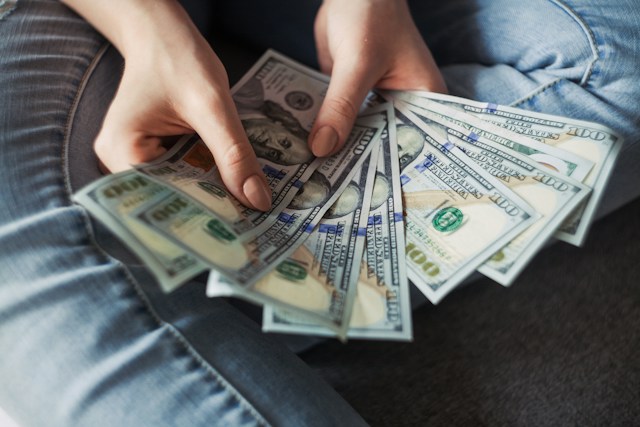How Much Money Is 400,000 Streams on Spotify?
For independent musicians and aspiring artists, deciphering the enigma of streaming revenue is crucial. With the digital age enabling direct-to-consumer connections, understanding how platforms like Spotify compensate for content consumption can mean the difference between a hobby and a livable career. This blog post dives into the depth of Spotify’s payment system, explores the factors that affect streaming revenue, and provides strategies for artists to maximize their earnings.
Why Streaming Revenue Matters
Streaming platforms are the modern-day record labels, gatekeepers to the ears of listeners worldwide. As a result, the revenue generated from these platforms has become a cornerstone of the music industry. With over 365 million monthly active users, Spotify stands at the forefront, offering an immense opportunity for artists.
Understanding Spotify’s Payment System
Spotify, like its streaming contemporaries, uses a complex royalty system to compensate artists. Understanding this system is pivotal to gauging the returns from your streams.
The Math Behind It
Spotify uses a pro-rata model to distribute royalties from the pool of streaming revenues. Simply put, they calculate a total pie from their subscription fees and ad revenues, then divide it among artists based on their share of total streams on the platform.
Monthly Minimum Guarantee (MMG)
Spotify also offers upfront payments to labels and publishers in the form of Minimum Guarantee. This guarantees a certain amount of money regardless of streams and may affect the per-stream rate for artists.
Factors Affecting Streaming Revenue
Let’s dissect the components that can sway your streaming earnings on Spotify.
Number of Streams
It’s straightforward; the more you’re streamed, the more you earn. But that earning-per-stream average can fluctuate.
Type of Subscription
Premium subscribers typically earn more for artists than free users. This difference is a reflection of the higher revenues Spotify generates from its premium service.
Geographic Location
Different countries have different streaming rates, and your song’s popularity in a specific region can impact your earnings.
Royalty Rates
The negotiations between Spotify and record labels influence the per-stream royalty rates. This is where the bulk of Spotify’s earnings are distributed.
Calculating Revenue from 400,000 Streams
Let’s crunch the numbers. If an artist racks up 400,000 streams, many factors like their deal with labels, distribution services, and promotional costs affect what they take home.
Scenario A
For an independent artist without a label or distributor, this could amount to roughly $1,400 after royalty deductions.
Scenario B
An artist signed to a major label may only receive around $3,000 due to a variety of splits, fees, and advances against royalties.
Comparing Spotify to Other Streaming Platforms
While Spotify holds a lion’s share of the streaming market, other platforms like Apple Music, Tidal, and Amazon Music should not be overlooked.
The Difference a Stream Makes
Per-stream rates differ significantly; for example, Tidal typically offers higher payouts, albeit having a smaller user base.
Maximizing Streaming Revenue
As an independent musician, taking control of your streaming revenue is essential for sustainability. Here are a few strategies to boost your earnings from Spotify and similar platforms.
Boosting Your Streams
Focus on creating shareable content and growing a dedicated fan base to increase your streams.
Leveraging Spotify Tools
Use Spotify for Artists to understand your listeners’ demographics and tailor your promotions accordingly.
Diversifying Your Digital Presence
Don’t put all your eggs in one basket. Explore live streaming, merchandise, and other revenue streams.
Spotify Streaming Payout
Diving into the specifics of Spotify’s payout can offer insight into the company’s internal structure and how they align with artists’ success.
The Payout Structure
Spotify factors in a multitude of components when calculating their artist payouts, and a deep understanding of this system can benefit musicians.
Transparency Issues
Despite recent steps to increase transparency, some artists and industry professionals still call for clearer payout breakdowns.
Musician Earnings Breakdown
An artist’s earnings are rarely as simple as a straightforward per-stream rate. Let’s analyze the various aspects that come into play.
Label and Distribution Percentage
Labels and distributors get their cut, a percentage that directly affects what the artist receives.
Producer and Collaborator Fees
These expenses also affect the artist’s final payout from streaming services.
Artists Revenue Strategies
The most successful artists on Spotify have strategies that extend beyond just making music. They’re savvy businesspeople too.
The Importance of Playlists
Getting your music on popular playlists can dramatically increase your streams and ultimately your revenue.
Consistent Release Strategy
Regular releases help with playlist placements and keep your music relevant and searchable.
Engaging with Fans
Connecting with your audience through social media and live events can translate into stronger streaming numbers.
Conclusion
In the grand symphony of music streaming services, artists who understand the nuances of the industry stand to prosper. With an informed approach to their digital presence, and a strategic eye on revenue generation, 400,000 streams on Spotify don’t just represent numbers but potential real-world earnings. It’s a reminder that music is not just an art form—it’s also a business that demands skill, creativity, and grit to master.


